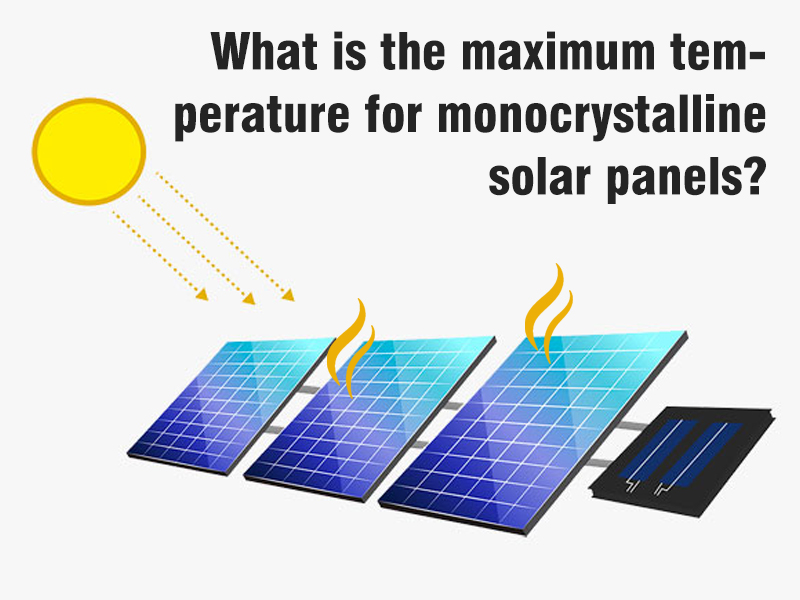Monocrystalline solar panels are a popular choice for harnessing the power of the sun due to their high efficiency and durability. The panels are made from a single continuous crystal structure, which makes them highly efficient at converting sunlight into electricity. However, like all solar panels, monocrystalline silicon panels are affected by temperature, and it is important nt to know the maximum temperature at which they can operate effectively.
The maximum temperature of monocrystalline solar panels is an important factor to consider when installing a solar system. High temperatures can have an impact on the performance and lifespan of solar panels. As the panel temperature increases, its efficiency decreases, resulting in less power generation. Additionally, prolonged exposure to high temperatures can damage the panel, affecting its long-term reliability and performance.
The maximum temperature at which monocrystalline solar panels operate effectively is typically around 149°F (65°C). Above this temperature, the efficiency of the panels begins to decrease and the power generation capacity also decreases. It is important to note that the actual operating temperature of the panels may be higher than the ambient temperature, especially when they are exposed to direct sunlight. This is due to the panels absorbing heat from the sun’s rays.
To mitigate the effects of high temperatures on monocrystalline solar panels, it is important to consider several factors when designing and installing a solar system. One of the key considerations is panel placement. By ensuring proper ventilation and airflow around the panels, excess heat can be dissipated, helping to maintain their efficiency and performance. Additionally, using shading devices or installing panels at an angle to reduce direct sunlight during the hottest times of the day can also help minimize the effects of high temperatures.
In addition to the physical placement of the panels, using high-quality materials and components in the construction of the solar system also helps improve the panels’ ability to withstand high temperatures. This includes using durable and heat-resistant materials for panel frames, mounting systems and electrical components. By choosing components that are reliable and well-designed, you can increase the overall resiliency of your solar system, allowing it to perform optimally even in high-temperature environments.
Additionally, regular maintenance and monitoring of solar panels is crucial to ensure their long-term performance, especially in high-temperature conditions. This includes inspecting the panels for any signs of damage or deterioration, as well as cleaning them to remove any build-up of dirt, dust or debris that may hinder their efficiency. By keeping your panels clean and well-maintained, you can maintain their ability to dissipate heat and operate at optimal temperatures.
It is also worth noting that advances in solar panel technology have led to the development of innovative solutions to address the impact of high temperatures on panel performance. For example, some manufacturers have introduced cooling systems that help regulate the temperature of the panels, ensuring they operate within an optimal temperature range. These cooling systems are particularly useful in areas with consistently high temperatures and where panels are exposed to strong sunlight for extended periods of time.
In summary, knowing the maximum temperature of a monocrystalline solar panel is critical to ensuring the efficiency and longevity of your solar system. The impact of high temperatures on panel performance can be mitigated by considering factors such as panel layout, component quality, maintenance and technological advancements. With proper care and attention, monocrystalline solar panels can continue to produce clean and sustainable energy, even under challenging environmental conditions.
Please come to contact solar panel provider Radiance to get a quote, we provide you with the most suitable price, factory direct sales.
Post time: Mar-22-2024


